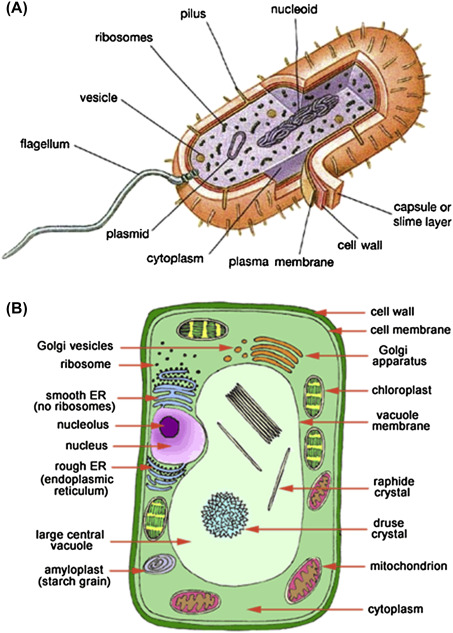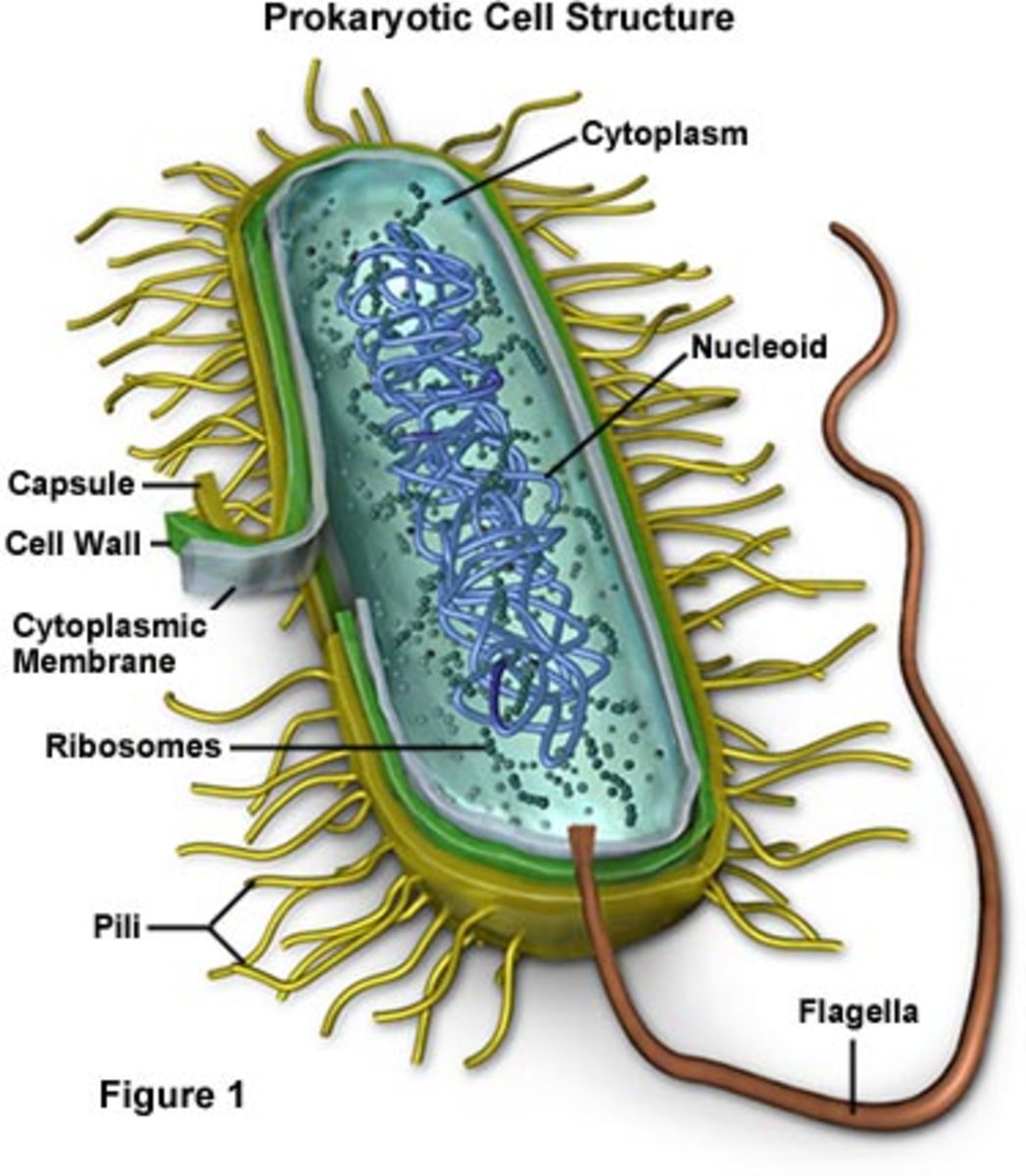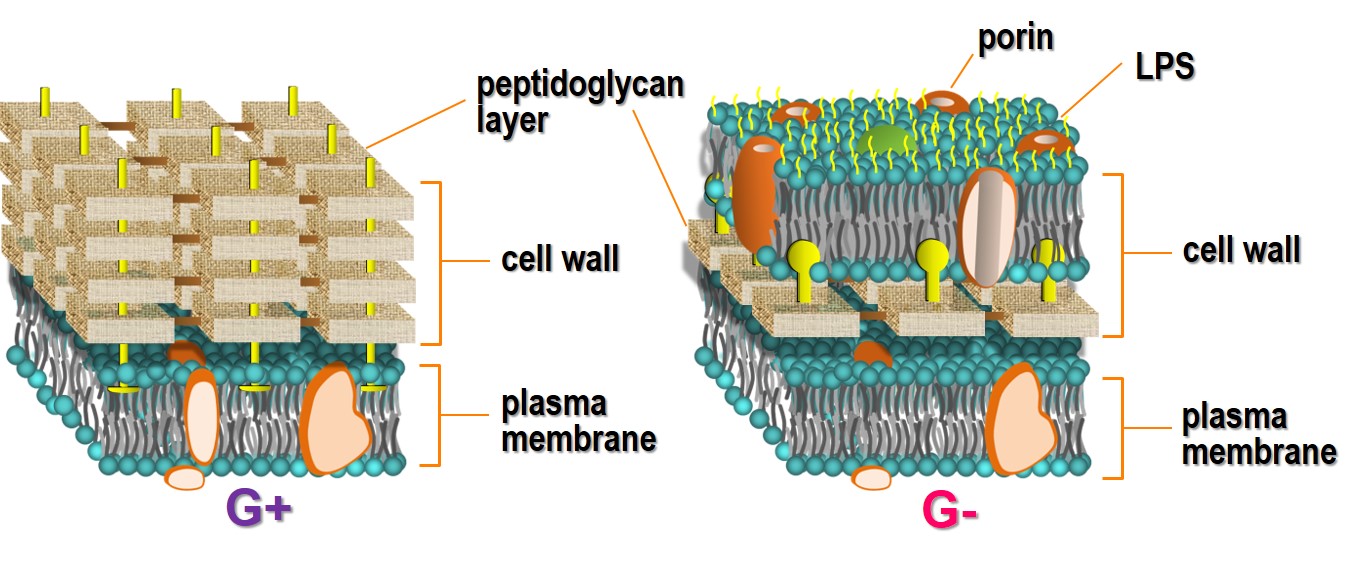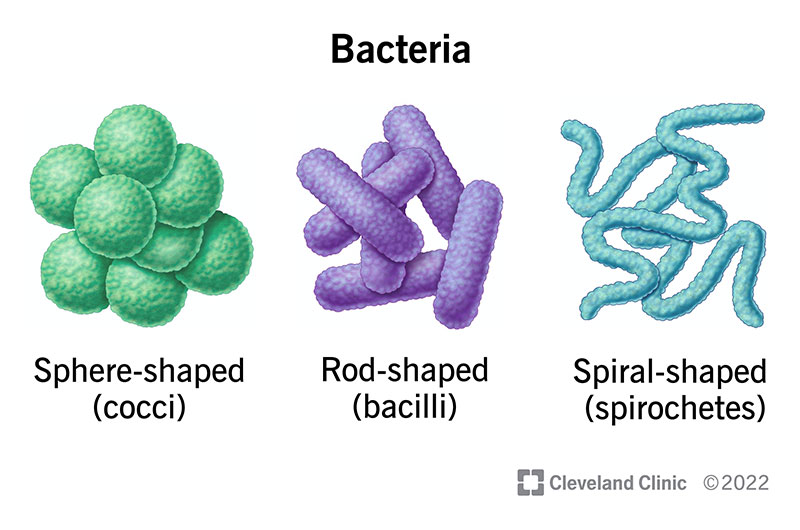Makindo Medical Notes"One small step for man, one large step for Makindo" |
|
|---|---|
| Download all this content in the Apps now Android App and Apple iPhone/Pad App | |
| MEDICAL DISCLAIMER: The contents are under continuing development and improvements and despite all efforts may contain errors of omission or fact. This is not to be used for the assessment, diagnosis, or management of patients. It should not be regarded as medical advice by healthcare workers or laypeople. It is for educational purposes only. Please adhere to your local protocols. Use the BNF for drug information. If you are unwell please seek urgent healthcare advice. If you do not accept this then please do not use the website. Makindo Ltd. |
Bacteria and their Infections
-
| About | Anaesthetics and Critical Care | Anatomy | Biochemistry | Cardiology | Clinical Cases | CompSci | Crib | Dermatology | Differentials | Drugs | ENT | Electrocardiogram | Embryology | Emergency Medicine | Endocrinology | Ethics | Foundation Doctors | Gastroenterology | General Information | General Practice | Genetics | Geriatric Medicine | Guidelines | Haematology | Hepatology | Immunology | Infectious Diseases | Infographic | Investigations | Lists | Microbiology | Miscellaneous | Nephrology | Neuroanatomy | Neurology | Nutrition | OSCE | Obstetrics Gynaecology | Oncology | Ophthalmology | Oral Medicine and Dentistry | Paediatrics | Palliative | Pathology | Pharmacology | Physiology | Procedures | Psychiatry | Radiology | Respiratory | Resuscitation | Rheumatology | Statistics and Research | Stroke | Surgery | Toxicology | Trauma and Orthopaedics | Twitter | Urology
Related Subjects: |Bacteria and their Infections |Viruses and their Infections |Fungi and their infections
Introduction
- Bacteria are single-celled microorganisms that play essential roles in ecosystems, health, and disease. They lack a nucleus (prokaryotic) and reproduce by binary fission, allowing rapid growth under favourable conditions.
- Bacteria are omnipresent in the environment, including in soil, water, and as part of the human microbiota. Their structure, classification, and behaviours are crucial for understanding their impact on both natural processes and human health.

Structure of Bacteria
- Basic Components : Bacteria possess DNA, ribosomes, cytoplasm, and a protective cell wall, but lack membrane-bound organelles. Most bacteria are around 0.5-5 micrometres in size.
- Cell Wall : The cell wall provides structural support, protecting bacteria against osmotic pressure and external threats. The primary component, peptidoglycan, consists of alternating sugar molecules, N-acetylglucosamine (NAG) and N-acetylmuramic acid (NAM), linked by peptide chains. The cell wall's structure differs between Gram-positive and Gram-negative bacteria, which affects staining properties and response to antibiotics. Mycoplasma Mycoplasma is a naturally occurring bacteria in which a cell wall is absent.
- Cell Membrane Composed of a lipid bilayer, the cell membrane is semi-permeable and contains embedded proteins for molecule transport, energy generation, and chromosomal attachment.
- Ribosomes: The ribosome of bacteria is the 70S which is made up of 30S and 50S subunits. Ribosomes serve as the site for protein synthesis.
- DNA The bacterial cell contains circular double-stranded DNA. All the genetic information is encoded in the DNA.
- Plasmids Plasmids are the extrachromosomal DNA that can replicate on its own. Its size ranges from 1.5 kilobases (kb) pairs to 120 kb pairs
- Capsule The capsule is the thin outer layer present in some bacteria. It protects the bacteria from phagocytosis. Non-capsulated bacteria are more prone to phagocytosis than capsulated bacteria. By performing the capsule staining, it can be visualized by the light microscope in which the capsule is seen as a hollow structure. Examples of the capsulated bacteria: Those with no spleen are particularly vulnerable.
- Streptococcus pneumoniae
- Haemophilus influenzae
- Klebsiella pneumoniae
- Neisseria meningitidis
- Flagella: Bacterial Flagella help in locomotion. It protrudes out from the cell wall. Flagella are made up of flagellin protein.
- Pili (Fimbriae): These are the hair-like filaments extending from the cell surface. Pili are shorter and straighter than the flagella. It is made up of pilins protein. Pili helps in the adherence of the bacteria to the host cells. Sex pili help in the transfer of bacterial DNA during conjugation.
- Spores Spores are the resting or dormant form of bacteria. During starvation or under unfavorable conditions, bacteria like Bacillus and Clostridium spp. produces spores. The spores of the bacteria are resistant to boiling, disinfectants, and heating. Bacterial spores can be visualized by endospore staining. Examples of the spore former bacteria: Bacillus stearothermophilus, Bacillus anthracis, and Clostridium tetani.

Staining Techniques
- Gram Staining :
- Gram-positive : Thick peptidoglycan layer retains the purple crystal violet stain. Peptidoglycan is the main component of the Gram-positive cell wall that is thick and constitutes about 40-80 % of the dry weight of the cell wall. The Gram-positive cell wall consists of Teichoic acids and Teichuronic acid.
- Gram-negative : Thin peptidoglycan layer with an outer membrane loses the purple stain but appears pink with a counterstain. Gram-negative cell wall contains four main components: lipopolysachharides, outer membrane, lipoprotein layer, and peptidoglycan. Lipopolysaccharides is present in the outer membrane of the Gram-negative bacteria. It comprises lipid A, core oligosaccharide, and O polysaccharide.
- Ziehl-Neelsen Staining : Used for acid-fast mycobacteria due to high lipid content in their cell walls, which resists decolourisation by acid and alcohol. The cell of acid-fast bacteria is resistant to most detergents and strong acids. It cannot be stained with the Gram stain, so we need to perform the Ziehl-Neelsen staining for its visualization. Acid-fast bacteria like Mycobacterium tuberculosis consist of mycolic acids linked to the arabinoglycan protein. Due to its structural composition, it resists the acid alcohol, called the acid-fast bacilli.
- Auramine Staining : A fluorescent stain for mycobacteria, retained even after exposure to acid.

Cell Shape and Arrangement
- Shapes :
- Cocci : Spherical (e.g., Staphylococcus, Streptococcus).
- Bacilli : Rod-shaped (e.g., Escherichia coli).
- Spirilla : Helical-shaped (e.g., Treponema).
- Arrangements :
- Chains : Streptococci.
- Clusters : Staphylococci.
- Pairs : Diplococci (e.g., Neisseria).

Gram Stain
| Feature | Gram-positive cell wall | Gram-negative cell wall |
|---|---|---|
| Thickness | Gram-positive cell wall is thick, i.e., 15-80 nm. | Gram-negative cell wall is thin, i.e., 2 nm. |
| Peptidoglycan Layer | Peptidoglycan layer is present in abundance. | Peptidoglycan layer is significantly less. |
| Lipid Content | Lipid content is 2-5%. | Lipid content is 15-20%. |
| Teichoic Acid | Teichoic acid is present. | Teichoic acid is absent. |
| Effect of Lysozyme Treatment | Treatment with lysozyme makes protoplast. | Treatment with lysozyme makes spheroplast. |
Gram Negative
In Gram-negative bacteria, the outer membrane serves as a protective barrier against environmental stressors, harmful agents, and antibiotic penetration, and it also prevents cell lysis by lysozyme. This bilayered structure comprises several components, including porins, outer membrane proteins (OMPs), and other proteins:
- Porins: Abundant in the outer membrane, porins maintain membrane permeability, enabling passive diffusion of small hydrophilic molecules like sugars, amino acids, and ions.
- Outer Membrane Proteins (OMPs): These proteins, embedded in the membrane, support nutrient uptake, membrane stability, and virulence. Notably, Omp C, D, F, PhoE, and LamB facilitate maltose and maltodextrin diffusion, while Omp A anchors the outer membrane to the peptidoglycan layer.
This structure is essential for the bacterial cell’s resilience and functionality.
External Structures
- Flagella : Motility structures that rotate, enabling chemotaxis (movement towards/away from chemical signals).
- Pili (Fimbriae) : Hair-like structures for adhesion and genetic exchange via conjugation.
- Capsules : Polysaccharide layers that enhance bacterial virulence by preventing phagocytosis.
Internal Structures
- Chromosome : Circular, double-stranded DNA attached to the cell membrane.
- Ribosomes : Sites of protein synthesis, composed of 30S and 50S subunits.
- Plasmids : Extrachromosomal DNA molecules that carry non-essential but advantageous genes, such as antibiotic resistance.
- Cytoplasmic Inclusions : Storage granules for nutrients, e.g., glycogen.
Reproduction and Growth
- Binary Fission : Bacteria divide by binary fission, with each cell splitting into two identical daughter cells, allowing rapid population growth in optimal conditions.
- Doubling Time : Some bacteria divide every 20-30 minutes under ideal conditions.
Genetics and Gene Transfer
- Conjugation : Plasmid DNA transfer between bacteria, often carrying antibiotic resistance genes.
- Transduction : Gene transfer via bacteriophages, which can incorporate bacterial DNA from one cell to another.
- Transformation : Uptake of free DNA from the environment.
- Transposition : Movement of genetic elements within or between DNA molecules.
Metabolism
- Nutritional Requirements :
- Essential elements include C, H, O, N, P, S, Ca, K, Mg, and Fe.
- Trace elements, such as Cu, Co, and Zn, support enzymatic function.
- Bacteria metabolise amino acids, nucleotides, and vitamins from their environment.
- Energy Generation :
- Fermentation : Anaerobic energy production.
- Respiration : Aerobic energy generation via the electron transport chain.
- Photosynthesis : Performed by some bacteria, utilising light to synthesise glucose.
Environmental Requirements
- Water : Essential for bacterial survival.
- Temperature : Pathogens usually prefer 37°C, though ranges vary.
- pH : Most bacteria thrive in a neutral pH (7.2-7.4), though some can survive in extreme pH levels.
- Oxygen Requirements :
- Aerobes : Require oxygen.
- Anaerobes : Grow without oxygen, with obligate anaerobes harmed by oxygen.
- Facultative Anaerobes : Grow with or without oxygen.
- Microaerophiles : Prefer reduced oxygen levels.
Culturing Bacteria
- Media Composition : Includes essential nutrients such as water, NaCl, peptone, and yeast or meat extracts.
- Types of Media :
- Blood Agar : Contains 10% horse blood for differentiating bacteria by haemolysis type (alpha, beta, gamma).
- Chocolate Agar : Heated blood agar used for fastidious bacteria (e.g., Haemophilus).
- Selective Media : Inhibits unwanted bacteria (e.g., MacConkey agar for Gram-negative bacteria).
- Indicator Media : Contains pH indicators for observing bacterial metabolism, such as lactose fermentation on MacConkey agar.
Bacterial Classification
Bacteria are classified based on morphology, staining, biochemical properties, genetic analysis, and other features. Accurate classification aids in identifying pathogens, understanding environmental roles, and developing effective treatments.
Methods of Bacterial Classification
- Morphological Classification :
- Shape (e.g., cocci, bacilli, spirilla).
- Arrangement (e.g., chains, clusters, pairs).
- Size and specific structural variations, such as spores in Bacillus and Clostridium.
- Gram Staining Classification : Distinguishes bacteria by cell wall structure, categorising them as Gram-positive or Gram-negative.
- Biochemical and Metabolic Classification :
- Based on enzyme production (e.g., catalase, oxidase) and metabolic pathways (e.g., fermentation).
- Nutritional needs help classify fastidious organisms.
- Antigenic Classification :
- Serotyping : Based on surface antigens (O, H, K antigens).
- Lancefield Grouping : Used for streptococci, based on carbohydrate cell wall antigens.
- Genetic and Molecular Classification :
- 16S rRNA sequencing : Highly conserved gene used for bacterial identification.
- Whole-genome sequencing : Provides comprehensive genetic profiling for exact classification.
- PCR : Amplifies bacterial DNA, aiding in species or strain identification.
Hierarchy of Classification
- Domain: Bacteria
- Phylum, Class, Order, Family, Genus, Species
- Example: Escherichia coli (Genus: Escherichia, Species: coli).
Common Infections
| Bacteria | Infections | Treatments/Antibiotics |
|---|---|---|
| Staphylococcus aureus | Skin infections (e.g., cellulitis, abscesses), pneumonia, osteomyelitis, septic arthritis, endocarditis, toxic shock syndrome |
|
| Streptococcus pyogenes (Group A Strep) | Pharyngitis, scarlet fever, cellulitis, necrotising fasciitis, rheumatic fever, toxic shock syndrome | Penicillin, Amoxicillin, Clindamycin (for toxin-mediated infections) |
| Streptococcus pneumoniae | Pneumonia, meningitis, sinusitis, otitis media, bacteremia | Amoxicillin, Ceftriaxone, Levofloxacin (for penicillin-resistant strains) |
| Escherichia coli | Urinary tract infections (UTI), gastroenteritis, septicemia, neonatal meningitis |
|
| Klebsiella pneumoniae | Pneumonia, UTIs, liver abscesses, septicemia |
|
| Pseudomonas aeruginosa | Pneumonia, UTIs, wound infections, sepsis, particularly in immunocompromised patients | Piperacillin-tazobactam, Cefepime, Meropenem, Ceftazidime, Ciprofloxacin |
| Neisseria meningitidis | Meningitis, meningococcemia | Ceftriaxone, Cefotaxime; prophylaxis for close contacts: Rifampin, Ciprofloxacin |
| Neisseria gonorrhoeae | Gonorrhea, pelvic inflammatory disease (PID), septic arthritis | Ceftriaxone (IM) combined with Azithromycin or Doxycycline |
| Clostridioides difficile | Antibiotic-associated colitis (C. diff infection) | Oral Vancomycin, Fidaxomicin; Metronidazole for mild cases |
| Haemophilus influenzae | Pneumonia, meningitis, otitis media, epiglottitis, sinusitis | Amoxicillin-clavulanate, Ceftriaxone, Azithromycin |
| Salmonella spp. | Gastroenteritis, typhoid fever (S. Typhi), septicemia |
|
| Mycobacterium tuberculosis | Tuberculosis (TB), primarily affecting the lungs but can affect other organs | Isoniazid, Rifampin, Pyrazinamide, Ethambutol (initial combination therapy for active TB) |
| Helicobacter pylori | Peptic ulcer disease, chronic gastritis, gastric cancer | Combination therapy: Amoxicillin, Clarithromycin, and a Proton Pump Inhibitor (PPI) |
| Vibrio cholerae | Cholera (severe diarrhoea and dehydration) | Rehydration therapy, Doxycycline, Azithromycin |
| Treponema pallidum | Syphilis | Penicillin G (IM); Doxycycline for penicillin-allergic patients |
| Borrelia burgdorferi | Lyme disease | Doxycycline, Amoxicillin, Cefuroxime |